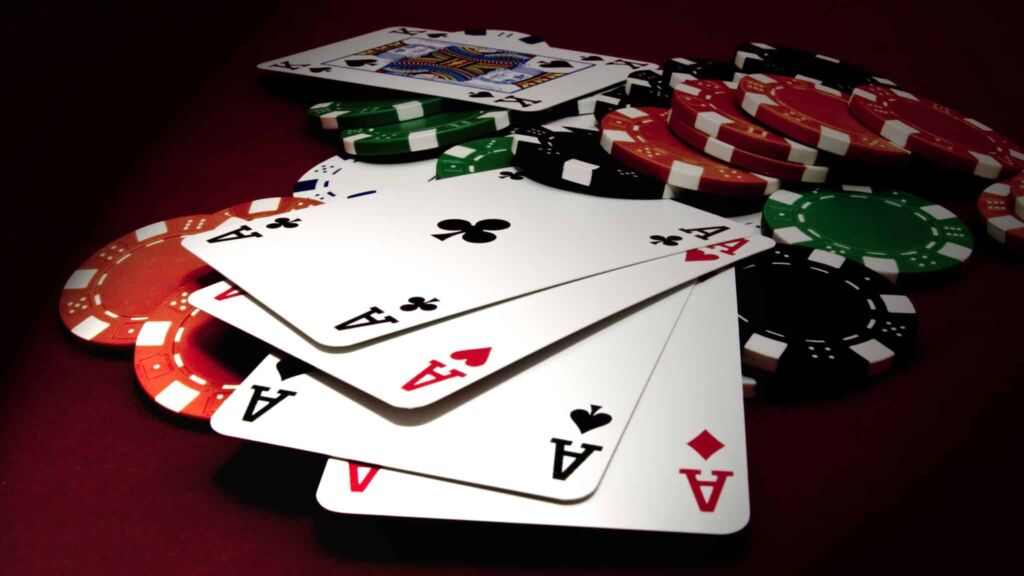Blackjack, a favorite among casino enthusiasts worldwide, is renowned for its mix of strategy and luck, offering favorable odds to players, particularly when they make use of the specific rules in play. Many gamblers know the standard rules, but few recognize how rule variations can significantly alter the odds. This analysis will delve into different blackjack rule sets and their effects on your probability of winning, equipping both novice and seasoned players with the knowledge needed for more strategic gameplay.
Getting to Grips with Fundamental Blackjack Rules
Before we unpack how various table rules can sway the odds, it’s crucial to grasp blackjack basics. In this game, the aim is to outperform the dealer by achieving a hand value nearer to 21 without exceeding it. Here are the essentials:
- Card Values: Cards numbered 2 through 10 carry their number as their value, face cards like Jacks, Queens, and Kings each hold a value of 10, and Aces are unique, offering flexibility by being valued as either 1 or 11 based on what advantages the hand more.
- The Deal: Players and the dealer both receive two cards. The dealer shows one card openly while keeping the second card face-down, often called the 'hole card.'
- Player’s Move: Actions players can take include 'hit' (request another card), 'stand' (hold their current hand), 'double down' (double their bet and get one additional card), or 'split' (divide a pair into two separate hands).
- Dealer’s Move: The dealer is obligated to hit if their hand amounts to 16 or less and to stand when it totals 17 or more. There are specific rules involving Aces—certain variations might require the dealer to hit on a soft 17 (Ace + 6).
Next, we will look into how distinct table rules can impact your winning probability in blackjack.
Usual Blackjack Table Rules and Their Impact on Chances of Winning
1. Number of Decks Used
How many decks are used in blackjack significantly sways the game odds. Classic tables use a single deck, but casinos today often employ several decks to increase the house's advantage and curb card counting. The probability of predicting cards declines as the number of decks increases, thereby slightly boosting the house's edge.
- Single Deck: Utilizing a single deck affords the most favorable odds for players. In this setup, if optimal strategy is applied, the house edge can be slim at around 0.17%. Players benefit from the reduced card pool, enhancing their tracking and boosting their odds.
- Multiple Decks: More decks elevate the house edge. For instance, with four decks, it increases to roughly 0.60%, and with six or eight decks, it can reach up to 0.65%. Predicting outcomes becomes tougher, especially for those counting cards.
2. Dealer’s Rule on Soft 17
In many blackjack variations, the rule is for the dealer to stand on a soft 17 (Ace + 6), yet some casinos permit the dealer to hit on such a hand. This minor adjustment can notably impact the game’s odds.
- Dealer Stands on Soft 17: When the dealer stands on a soft 17, players gain a minor edge since the dealer is less likely to improve their hand.
- Dealer Hits on Soft 17: Allowing the dealer to hit on a soft 17 raises the house edge by about 0.22%, offering the dealer a better chance to bolster their hand, which favors the house.
3. Blackjack Payouts
Naturally, hitting a 'blackjack'—an Ace paired with a 10-point card—yields the most recognizable payout aspect of the game. While a standard blackjack payout is 3:2, certain casinos propose a 6:5 payout or even less favorable options. These rules can profoundly affect your winning odds and potential earnings.
- 3:2 Payout: The classic, most beneficial payout for blackjack stands at 3:2; for example, a $10 bet returns $15 for a blackjack.
- 6:5 Payout: Some casinos lowered the blackjack payout to 6:5, augmenting the house edge by approximately 1.4%. Such changes render the game less appealing for players, prompting advisories to seek other tables.
4. Doubling Down
For players confident in their hands, doubling down presents an appealing option to increase their bet. Yet, casinos differ in their doubling down rules, and these variations can significantly sway the player's expected profit.
- Doubling Down Permitted on Any Two Cards: In certain games, players can double down regardless of their two cards, supplying greater versatility and the chance for increased returns, thereby favoring players.
- Doubling Down Limited to 9, 10, or 11: Alternatively, some casinos restrict doubling down to hands summing 9, 10, or 11. This restriction slightly raises the house edge as it limits the players' ability to act in advantageous circumstances.
5. Splitting Pairs
When players are dealt two cards of the same rank, they can opt to split them into two individual hands, effectively amplifying their bet. Much like doubling down, the potential to split pairs can substantially shape the odds.
- Splitting Aces: In certain games, splitting Aces restricts players to one added card per Ace. This limitation can hinder forming a strong hand. Nonetheless, if re-splitting Aces is allowed or if additional cards are distributed post-split, it reduces the house edge.
- Splitting Other Pairs: Casinos may vary rules on splitting pairs (like 8s, 7s, etc.). Often, re-splitting is allowed, heightening the player’s winning opportunities.
6. Surrender Option
The surrender option offers players the chance to forfeit half of their stake and withdraw their hand if they believe it’s unwinnable. Though this rule can curtail losses, not every casino provides this feature.
- Early Surrender: Allowing early surrender gives players the chance to fold before the dealer checks for blackjack, providing the most advantageous surrender option and meaningfully cutting potential losses.
- Late Surrender: More commonly, surrendering occurs after the dealer checks for blackjack, yet it's less favorable in comparison to early surrender.
Adapting Strategy in Response to Table Rules
Recognizing how table rules influence game odds is vital for players intent on boosting their success rates. Here’s advice on altering your blackjack approach in view of varying rules:
Adjusting to Number of Decks
In a single-deck game, the likelihood of hitting blackjack is higher, enhancing card counting strategies. However, with multi-deck games, emphasis should be on basic strategy over card counting as its effectiveness diminishes.
Dealer’s Soft 17 Rule
For tables where the dealer hits on a soft 17, players might adopt a more cautious approach when holding a 16 or 17 since the dealer’s prospects of hand enhancement rise. Standing on a 16 becomes more appealing than risking another hit.
Blackjack Payout Adjustments
Tables offering a 6:5 payout should generally be avoided. The amplified house edge means profitability is harder to attain. Seek out the traditional 3:2 payout tables for a fairer game.
Doubling Down and Splitting
Tables that permit doubling down irrespective of your hand deliver unique opportunities, particularly with a total of 11. Equally, games allowing re-splitting of Aces provide a better chance of assembling winning hands.
Conclusion
Blackjack, being a game marked by dynamic rules, demonstrates how odds can be heavily altered by rule specifics. By understanding rule impacts—like deck numbers, dealer actions on soft 17, and payout changes—players can form more calculated decisions and foster greater game success. Whether you are merely starting or are a seasoned player, refining your strategy according to the game’s rules could be key in increasing your profits while reducing potential losses.



